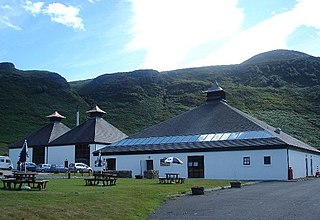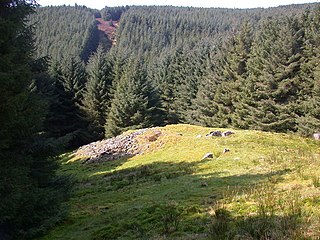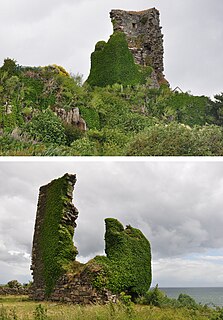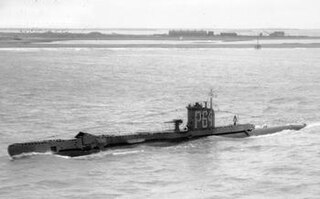 W
WThe Isle of Arran or simply Arran is an island off the west coast of Scotland. It is the largest island in the Firth of Clyde and the seventh largest Scottish island, at 432 square kilometres (167 sq mi). Historically part of Buteshire, it is in the unitary council area of North Ayrshire. In the 2011 census it had a resident population of 4,629. Though culturally and physically similar to the Hebrides, it is separated from them by the Kintyre peninsula. Often referred to as "Scotland in Miniature", the island is divided into highland and lowland areas by the Highland Boundary Fault and has been described as a "geologist's paradise".
 W
WThe A841 road is the only A-road on the Isle of Arran and forms the island's primary transport route, as it connects all the major settlements on the island on its 55-mile (89-kilometre) course around the coast - Brodick, Lochranza, Blackwaterfoot and Whiting Bay. At only one point does it venture inland, and this is to climb the 600-foot (180-metre) pass at Boguillie between Creag Ghlas Laggan and Caisteal Abhail.
 W
WThe Arran Coastal Way is a 107 kilometre long-distance trail that goes around the coastline of Arran in Scotland. As the route is circular, following the coastline of the island, it can be started and finished at any location, however in recognition of the fact that most visitors to the island arrive and depart via the Caledonian MacBrayne ferry a start/finish monument is located on the seafront near Brodick ferry terminal. The route is fully waymarked, using marker posts featuring a gannet.
 W
WArran distillery is a whisky distillery in Lochranza, Scotland, Isle of Arran.
 W
WArran High School is a state-funded secondary school at Lamlash, on the Isle of Arran, Scotland. It is the only secondary school on the island, and is located beside Lamlash Primary School. The school has a roll of around 250 pupils, about 50 teachers, 16 prefects, 2 School Captains and 2 vice captains. At the beginning of 2008, a new school building was opened, replacing an older building which dated from the late 1930s.
 W
WAuchagallon Stone Circle or Auchengallon cairn is the remains of a Neolithic or Bronze Age burial cairn, surrounded by a circle of fifteen stones. It is located near Machrie on the Isle of Arran in Scotland.
 W
WBrodick Castle is a castle situated outside the port of Brodick on the Isle of Arran, an island in the Firth of Clyde, Scotland. It was previously a seat of the Dukes of Hamilton, but is now owned by the National Trust for Scotland. The castle is a Category A listed building and the grounds are included in the Inventory of Gardens and Designed Landscapes in Scotland.
 W
WCarn Ban is a Neolithic chambered tomb located on the Isle of Arran in Scotland.
 W
WThe Giants' Graves are the remains of two Neolithic chambered tombs on the Isle of Arran in Scotland. They are situated within 40 metres of each other, and stand on a ridge 120 metres above the sea in a clearing in a forest, overlooking Whiting Bay to the south.
 W
WKildonan Castle stands in the small village of Kildonan on the southern coast of the Isle of Arran in Scotland. The castle's name is derived from the name of a former resident, Saint Donan, who is said to be buried on the island.
 W
WKilpatrick Dun is an Iron Age dun, located about 1 mile south of the village of Blackwaterfoot on the Isle of Arran in Scotland.
 W
WLochranza Castle is an L-plan fortified tower house situated on a promontory in Lochranza, on the northern part of the Isle of Arran in Scotland. Most of the castle was built in the 16th century.
 W
WMachrie Moor Stone Circles is the collective name for six stone circles visible on Machrie Moor near the settlement of Machrie on the Isle of Arran, Scotland.
 W
WMoss Farm Road Stone Circle is the remains of a Bronze Age burial cairn, surrounded by a circle of stones. It is located near Machrie on the Isle of Arran in Scotland.
 W
WNHS Ayrshire and Arran is one of the fourteen regions of NHS Scotland. It was formed on 1 April 2004.
 W
WMV Rhum is a car ferry built for Caledonian MacBrayne in 1974. Until 1987, she operated the seasonal Lochranza crossing to Arran. Since 1998, she has been one of the Arranmore ferries in County Donegal.
 W
WSorbus arranensis, sometimes referred to as the Scottish or Arran whitebeam is a species of plant in the family Rosaceae. It is endemic to the island of Arran in Scotland.
 W
WSorbus pseudofennica is a species of plant in the family Rosaceae. Endemic to the Isle of Arran in Scotland, it is threatened by habitat loss. It is thought to be a naturally occurring hybrid between S. arranensis and S. aucuparia, probably with additional backcrossing with S. aucuparia. Sorbus arranensis is itself a hybrid between S. rupicola and S. aucuparia. Apomixis and hybridization are common in some groups of Sorbus species.
 W
WTorr a'Chaisteal is an Iron Age fort (dun), located about 1 mile northeast of the village of Sliddery, on the Isle of Arran in Scotland.
 W
WTorrylin Cairn is the remains of a Neolithic chambered tomb. It is located near Kilmory on the Isle of Arran in Scotland.
 W
WHMS Vandal (P64) was a Royal Navy U-class submarine built by Vickers-Armstrong at Barrow-in-Furness, yard number 838. The submarine had the shortest career of any Royal Navy submarine, being lost with all 37 onboard just four days after commissioning.